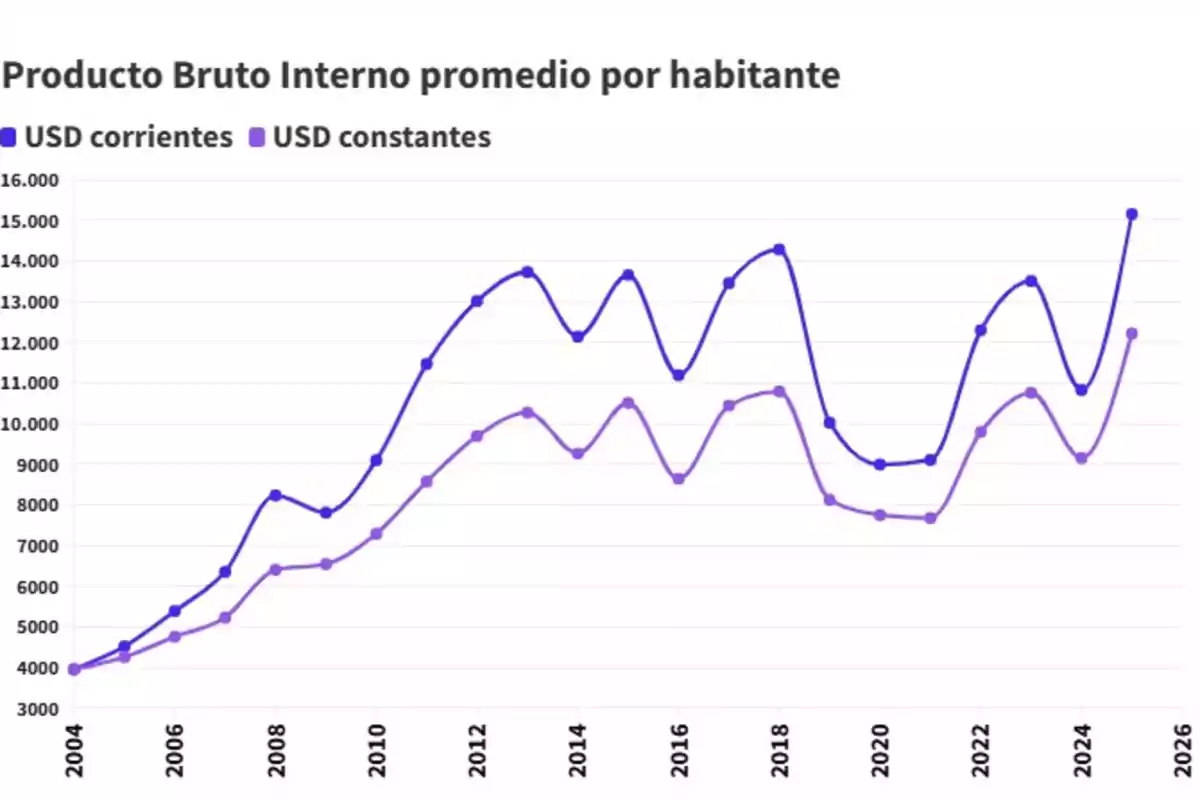
Thanks to Milei, Argentina's per capita GDP reached its highest level since 2004.
This is happening in a context of significant economic growth and a sharp decline in inflation
Thanks to the government of Javier Milei, the Gross Domestic Product (GDP) per capita of Argentina reached a record in dollars during the first quarter of 2025.
This is reflected in the latest data published by the National Institute of Statistics and Censuses (Indec) and the statistical database of the Ministry of Economy, which reveal a significant improvement in the country's main macroeconomic indicators.
According to Indec's preliminary estimates, total supply, measured at 2004 prices, increased by 13% year-on-year, driven by a 5.8% rise in real GDP and a remarkable 42.8% increase in imports of goods and services.

Meanwhile, total demand showed advances of 31.8% in gross fixed capital formation, 11.6% in private consumption, and 7.2% in exports. The only decline recorded was in public sector consumption, which fell by 0.8%.
The most striking figure comes from the Ministry of Economy: GDP per capita in current dollars reached a record of USD 15,161 (annual equivalent) during the first quarter, using the Central Bank's wholesale exchange rate.
This is the highest level since the series began in 2004, with a 41% increase compared to the previous year. In constant values, adjusted for inflation according to the 2004 index, GDP per capita was USD 12,221, also the highest in the past 22 years.

The recovery is explained by several factors. First, the aggregate reactivation of the economy, with 5.8% growth in GDP; a significant increase in productivity, the initial exchange rate jump of the new government that anchored expectations; and economic openness, with price liberalization and foreign trade.
In addition, the average exchange rate in the first quarter increased by 26.6%, compared to a year-on-year inflation of 78.8%, which sharply reduced the inflationary component measured in dollars.
Added to this is the sharp drop in inflation, fiscal consolidation, with a fiscal surplus and the elimination of Central Bank assistance to the Treasury, which reinforced monetary stability and boosted the improvement of income in hard currency.
These official data confirm that Argentina, thanks to Milei's government, reached record levels of GDP per capita in dollars, both in current and real terms, marking an economic milestone that contrasts with previous years of stagnation and that, if the course is maintained, heralds long-term growth.
More posts: